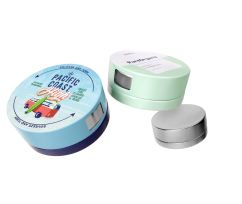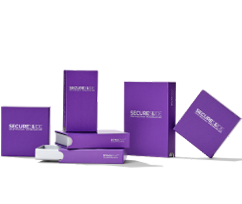The Versatility of Child-Safe Packaging
Your product’s packaging may be the first touch you have with your customers. It should be sleek, easy to use and when needed, child-resistant.
Child-safe packaging is mandated by the U.S. Consumer Product Safety Commission for some products, and there are plenty of options from packaging suppliers to get your product noticed and keep in line with federal regulations.
Among others, human consumables, pet supply, and cleaning supply manufacturers are finding innovative ways to keep children safe while also getting their brand noticed by consumers.
Dymapak’s Secure Sack is the world’s first lab certified child–resistant pouch that allows manufacturers to customize their branding for any product requiring child-safe packaging. Its patented locking press-to-close zipper, coupled with thick food-grade plastic, and extra durable, flexible construction allow for safe storing of products that should be kept out of the reach of children.
Child-Safe Packaging & Consumer Goods
Child-safe packaging is nothing new to the manufacturing industry, but new, innovative packaging gives manufacturers more sophisticated and appealing options to keep their products away from children.
The Upstate New York Poison Center reported a significant increase in cases in 2019, with 35 percent of the total volume involving children ages 5 and younger, according to The Citizen, a local newspaper covering Auburn, New York. The calls include children ingesting cosmetics, pain relief cream, and household cleaning products.
According to the Consumer Product Safety Commission, a lidocaine-containing over-the-counter product was recalled in November 2019 because it didn’t have child-safe packaging, likely a costly, but necessary, decision for the company. That costly mistake could have been avoided with a press-to-seal, locking closure.
In 2012-13, a laundry pod was responsible for sending one child per day to the emergency room, according to “Pediatric exposure to laundry detergent,” published in Pediatrics journal. Since then, Proctor & Gamble revisited its packaging to make it less appealing – and less accessible – to children.
They tossed out the round plastic container, and instead packaged the laundry pods in a flexible, resealable and opaque bag. Proctor & Gamble did exactly what the Upstate New York Poison Center – and poison control centers across the country – recommends: Store items harmful to children in child-safe packaging.
While the pharmaceutical industry relies heavily on the push-and-turn locking closure bottles invented in the late 1960s, other industries need better options. Products frequently are too large or off-shape for the cylindrical bottles, but they are required to have child-safe packaging. That’s where the press-to-seal locking closure of Dymapak’s Secure Sack comes into play. Multiple sizes allow for the storage of various item sizes from batteries to edibles.
As more states move to legalize cannabis, dispensaries are looking to child-safe packaging for their products. Dymapak Secure Sack bags are compliant storage in California, Colorado, Nevada, Oregon, and more for CPG applications and cannabis-infused products, as well as pharmaceuticals. The packaging also is compliant for “container,” “immediate package,” and “exit package” classifications. If you want to learn more, please contact us or visit our online shop today!




